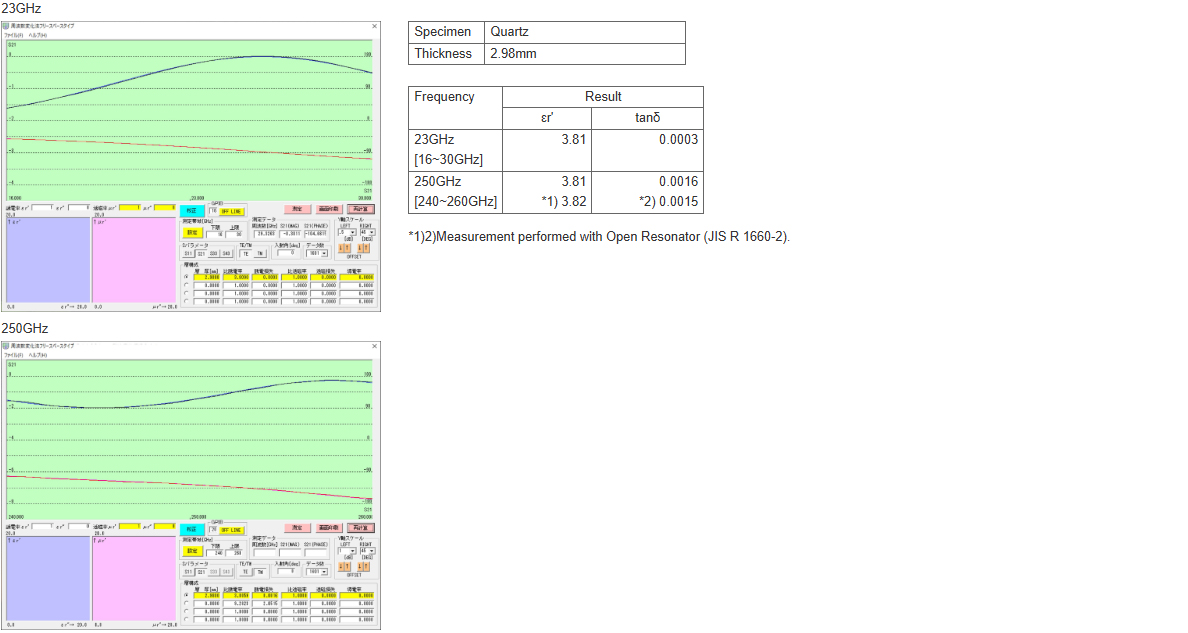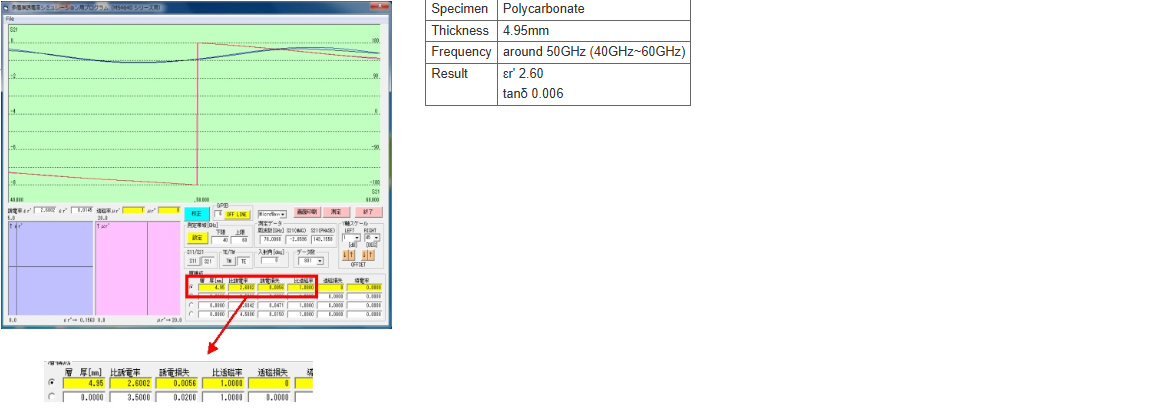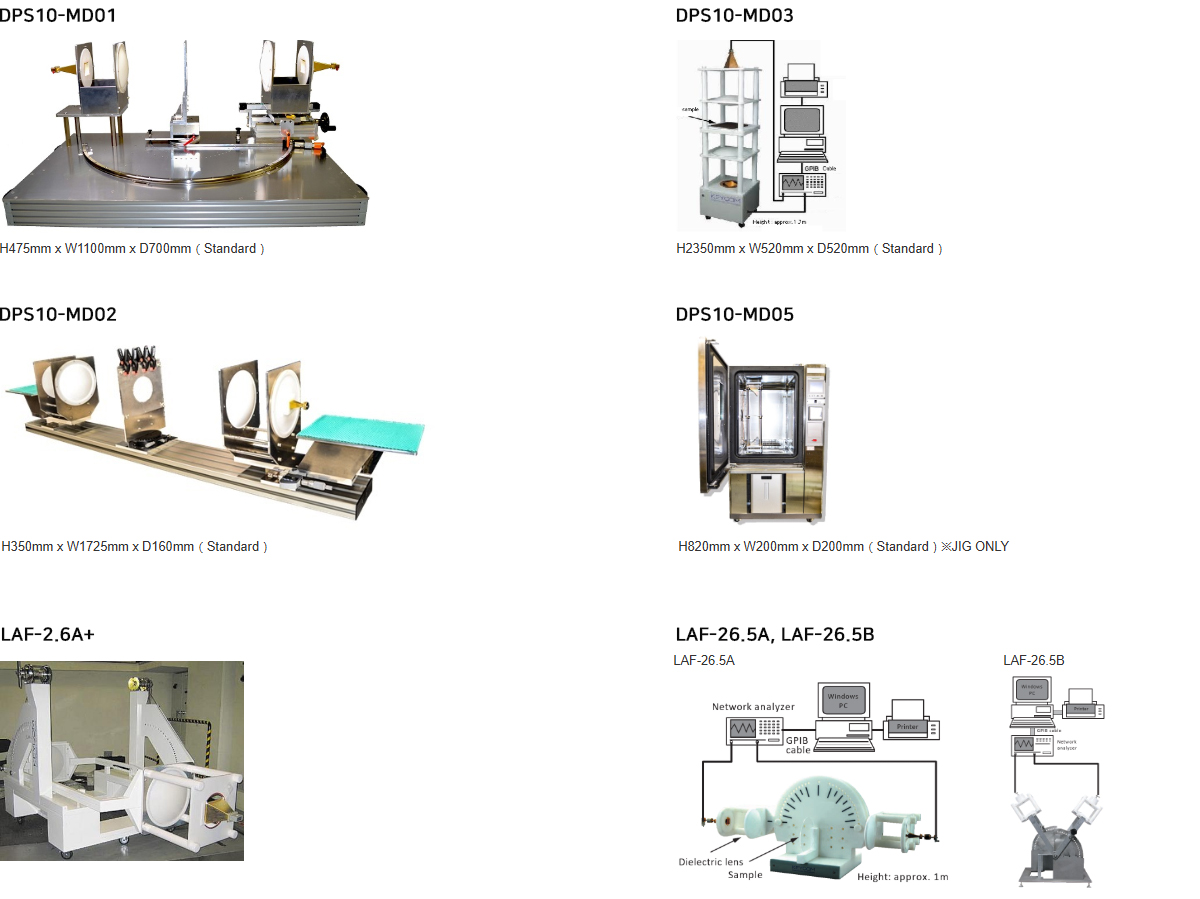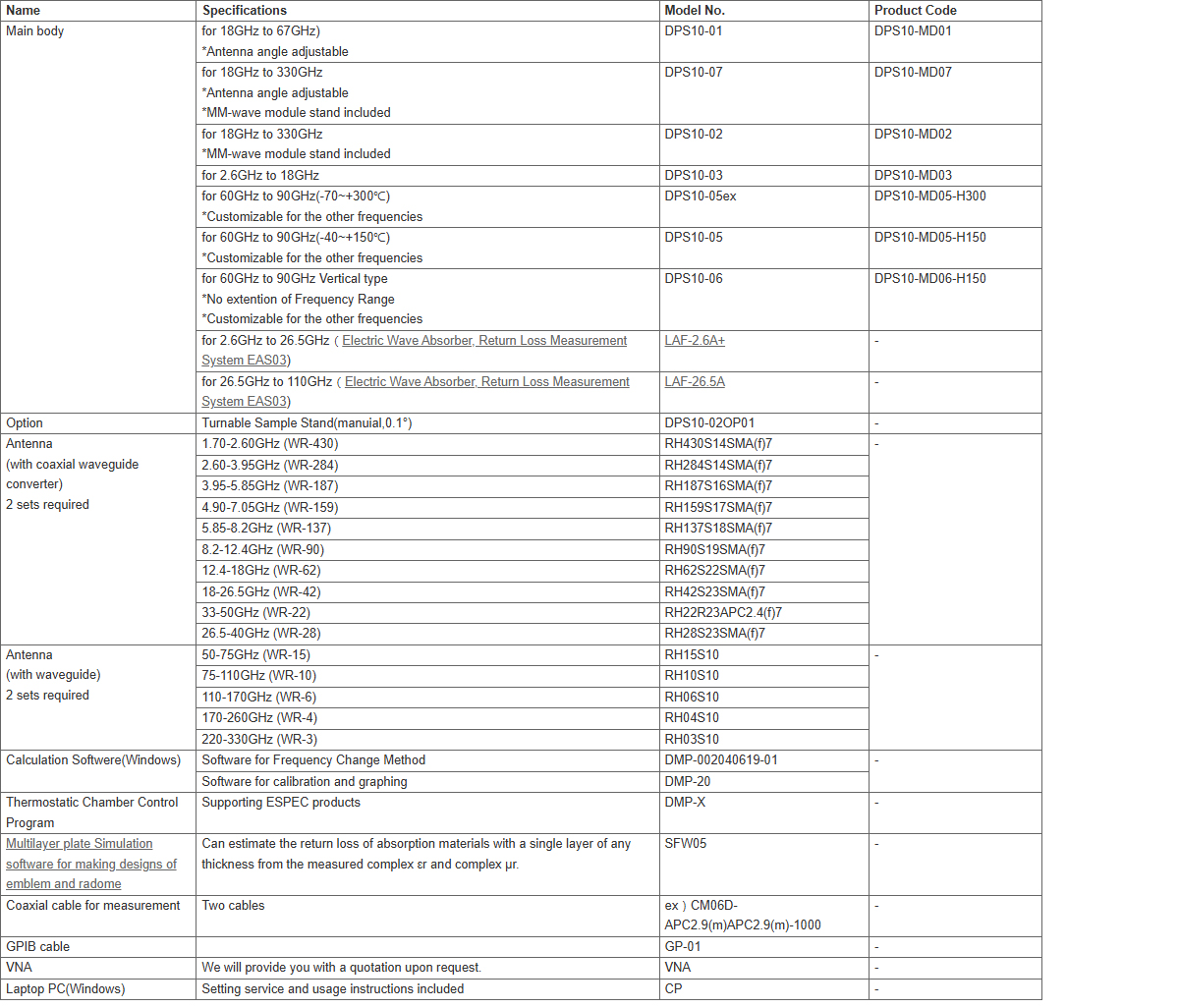This system measures permittivity and dielectric loss tangent in free space, eliminating a need for an anechoic chamber, suitable for measuring samples that cannot be cut or those of thick materials.
Its measurement method was newly developed, because conventional free space measurement s - parameter method does not gives enough accuracy.
Compared with s - parameter method, the system is characteristic in that it's easy just to perform zero calibration to measure, and its measurement accuracy is high enough to measure PTFE.
This system employs a deduction method in the measurement on the principle that the frequency characteristics of the transmission attenuation of radio wave radiated onto a plate is dependent on εr'.
Unlike coaxial tube or waveguide type, which uses samples housed in the fixture, it does not introduce errors resulting from air gaps.
In addition, because a lens is attached to the antenna, it is compact yet can measure samples with a plane wave, resulting in a high measurement accuracy.
Moreover, because measurement samples are placed near the antenna, sample size can be small.
Depending on the device type, radio wave absorption can also be measured.
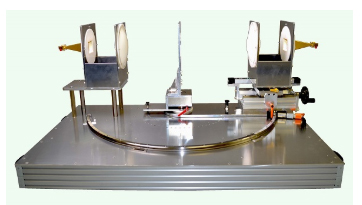
• Measured value is accurate.
• The measurement is very simple. S-Parameter Method needs TRL calibration and it's time-consuming. On the other hand, with this Frequency Change Method, you can perform measurement just after 0 calibration.
• You can check anisotropy of materials with ease. Most of materials have anisotropy.
• Though you see ingredients of your materials are uniformly distributed, in fact, they may be not. In such case, you can check the fact quickly.
• Compared with other measurement solutions, this method can reduce limitations in test pieces. You can prepare the samples easily.
Basic setting: perpendicular to the ground, vertically or horizontally in the in-plane direction
👉This makes it possible to check anisotropy in in-plane direction of the sample

